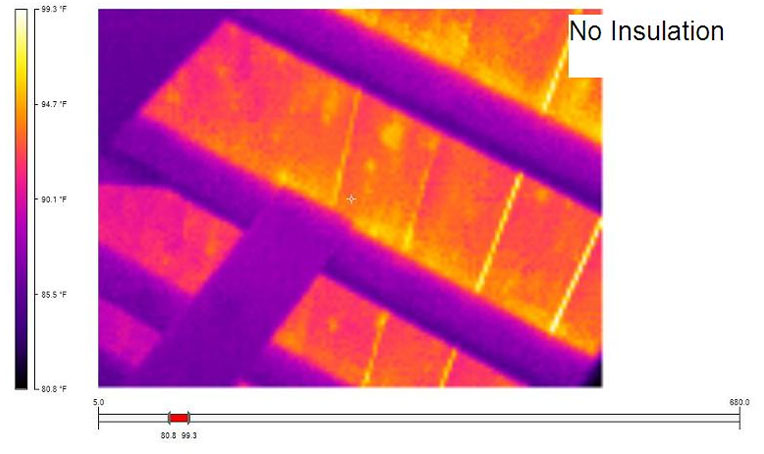Insulating properties are rated by a national standard measurement called an R-value. The higher the R-value, the more resistant the element is to conductively passing heat. To give a basic reference, a typical double pained window has an R-value of about 7 to 9. In Colorado climates a typical attic insulation value is recommended to be above R-30, though in more modern construction R-38 to 48 values are common. Some common varieties are fiberglass, fiberglass batt, foam, bag wool, rock wool, cellulose, cellulose, vermiculite, and wood chips, each with a different R-value density.
Insulation is one element in a tightly knit constructions system intended to improve indoor comfort and reduce energy consumption. Insulation should never be applied without considering its effect on other aspects of construction of existing elements of the home. Some additional factors to consider when evaluating roof and ceiling insulation are density and compressibility, air leakage, moisture control, and fire safety.
Each type of insulation has a density at which its R-value per inch is greatest, but reaching this density is not cost-effective. For 3.5" thick fiberglass batts, an R-13 batt contains 40% more material, and an R-15 batt contains 180% more material than an 3.5" R-11 batt. Achieving the maximum possible R-value for a 3.5" batt requires packing in the equivalent of eight R-11 batts.
An example, and somewhat consistent throughout different insulation types, a popular "pink" loose-fill fiberglass insulation posts the following R ratings:
- 19.50 inches = R49
- 17.50 inches = R44
- 15.25 inches = R38
- 12.00 inches = R30
- 10.25 inches = R26
- 8.75 inches = R22
- 7.50 inches = R19
- 4.25 inches = R11

The reason for the non-linear relationship is partially due to the stratified densities. As more insulation is blown in on top, the bottom layers become compressed under the increase weight on top.

Most blown-in, or loose fill insulation tends to settle, reducing its R-value. To achieve a desired overall R-value for blown in, loose fill insulation, specify the R-value or depth as measured after settlement. The required bag count per net 1,000 square feet to achieve a given settled R-value is listed on the bag, or can be obtained from the manufacturer. Monitoring installed bag counts is a convenient way to insure a quality installation.
While cathedral, or vaulted ceilings do not have an attic space, building codes required fiberglass batt installation with very few exceptions. Some older gable type homes, however, were constructed at a time when natural gas prices were so affordable that in was not considered to be cost effective to install attic nor wall insulation. It was rather short sighted, but it was considered that dead air space would provide an adequate and cost effective (at the time) insulating value.




